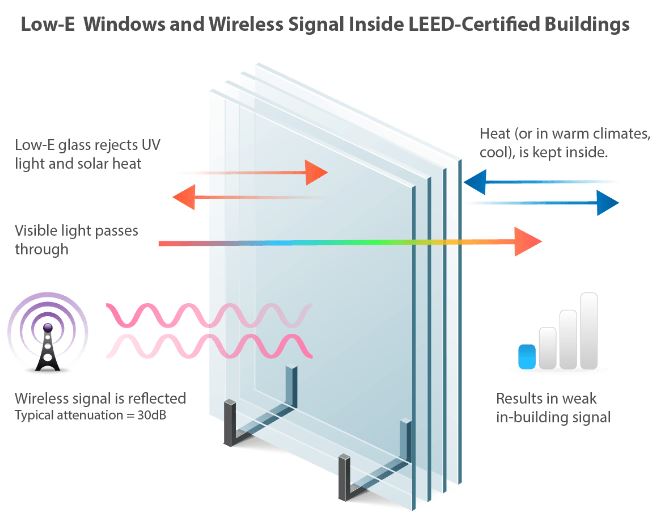Low-E glass is one of the mainstays of modern building construction, where the Leadership in Energy and Environmental Design (LEED) system dictates many design decisions. Unfortunately, LEED ratings do not take into account an issue with low-E glass that can be a nuisance for a building’s occupants in today’s technological world. The ability of low-E glass to reflect energy and improve insulation also impacts transmissions to and from cell phone towers, preventing them from penetrating buildings through the glass. The result is high signal attenuation (a reduction in signal strength) and poor indoor coverage, leading to a degraded customer experience.
A distributed antenna system alleviates the issue of poor coverage by using a network of indoor antennas spread throughout the building. An external donor antenna is used to supply the signal to the indoor antennas through media such as optical fiber. Users can be served directly by antennas within the building rather than making do with poor reception from signals having to travel through low e glass windows. Users gain the energy efficiency of low-E glass and the benefits of a high LEED rating without suffering from intermittent coverage and disappearing bars on their phones. They can achieve their goal of owning and working in a sustainable, environmentally friendly building without negatively affecting their modern lifestyles.




